Basin-scale Evaluation
and Research
The Basin-scale Project of the Flow-MER Program evaluates how Commonwealth environmental water supports rivers, wetlands, and life across the Murray–Darling Basin. Through rigorous science and research, it informs better water management and reporting for the Commonwealth Environmental Water Holder.
Image: Commonwealth Environmental Water Holder Dr. Simon Banks addresses the Flow-MER Annual Forum 2023 audience. Photo credit: Chris Walsh, Australian River Restoration Centre
What is the Flow-MER Basin-scale evaluation and research?
The Basin-scale Project works across the whole Murray–Darling Basin. We evaluate and study environmental water. This builds on long-term work that started in 2014. Our evaluations and research generate new knowledge that's used by the Australian Government.
The Basin-scale Project:
- evaluates the outcomes of Commonwealth environmental water across the Basin
- reports against Basin objectives and expected environmental outcomes
- studies how ecosystems respond to environmental water
- manages data and shares what we learn.
Each year, our Evaluation:
- assesses the outcomes of environmental water across the Basin
- looks at outcomes from the most recent year, and over the longer term
- uses strong scientific methods
- works with people from the Australian Government and Flow-MER
- meets reporting rules set by the Basin Plan 2012 and Water Act 2007.
Our Research:
- improves knowledge of how ecosystems, plants and animals respond to environmental water
- enhances how we manage environmental water.
Here’s our Basin-scale evaluation and research plan (PDF 5.6 MB).
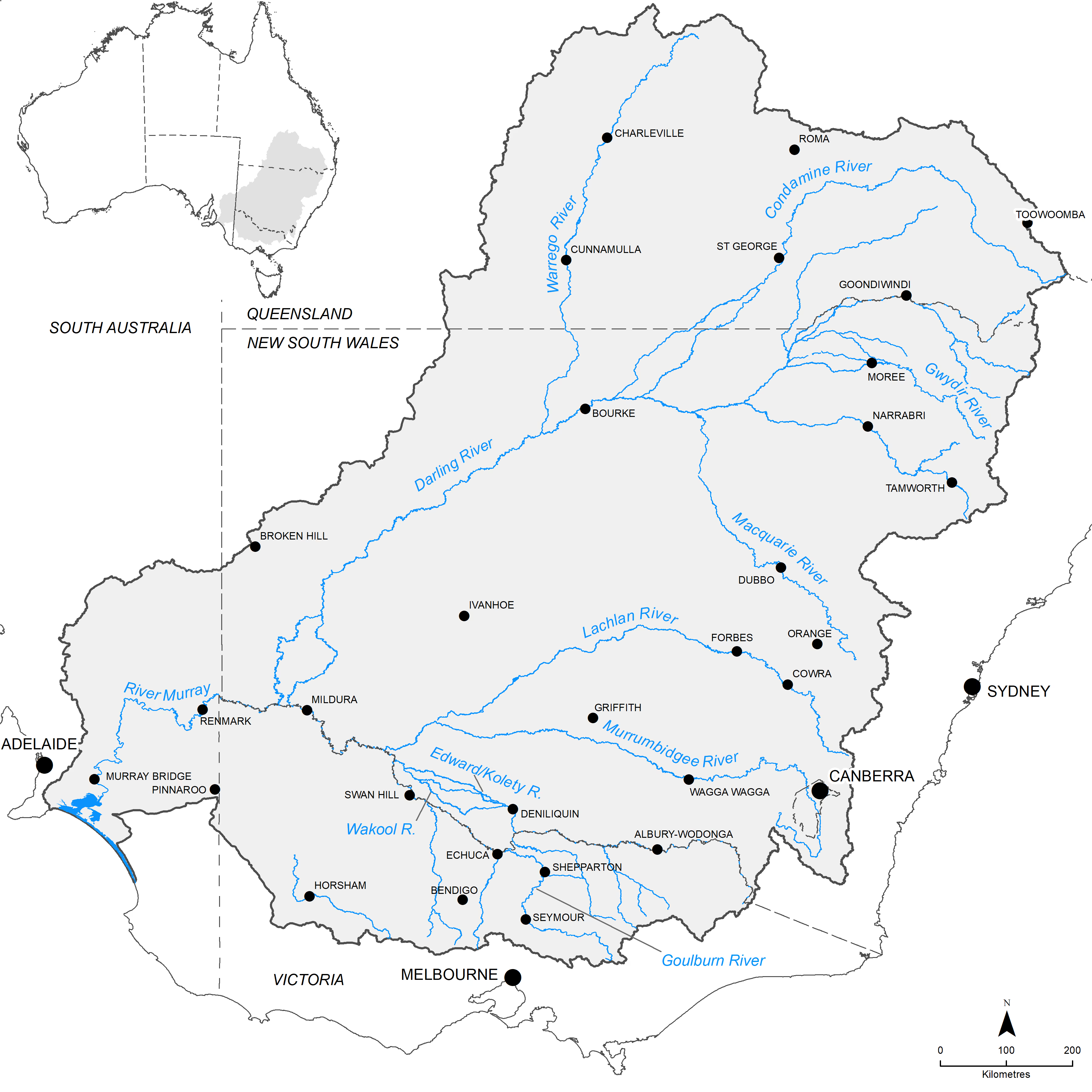
.avif)
Our Approach
Evaluation
We’ve done our evaluation every year since 2014.
The 10 Flow-MER Areas collect data that we use in the Basin-scale evaluation. We use this Area monitoring data and other available data from the most recent water year (the water year runs from July to June). We also analyse the long-term data we’ve been collecting since 2014.
Our scientists also gather information on:
- climate and rainfall
- river flows and runoff
- the area of wetlands and floodplains inundated with water.
We collate data on how much Commonwealth environmental water was delivered, as well as where, when and why. Our scientists then prepare foundation datasets for the evaluation.
The Basin-scale team analyses the foundation datasets and prepares:
- a report for each of the 5 themes (see below)
- a synthesis report.
Here are the reports for the most recent evaluation.
Each of the 5 themes has its own evaluation approach and questions.
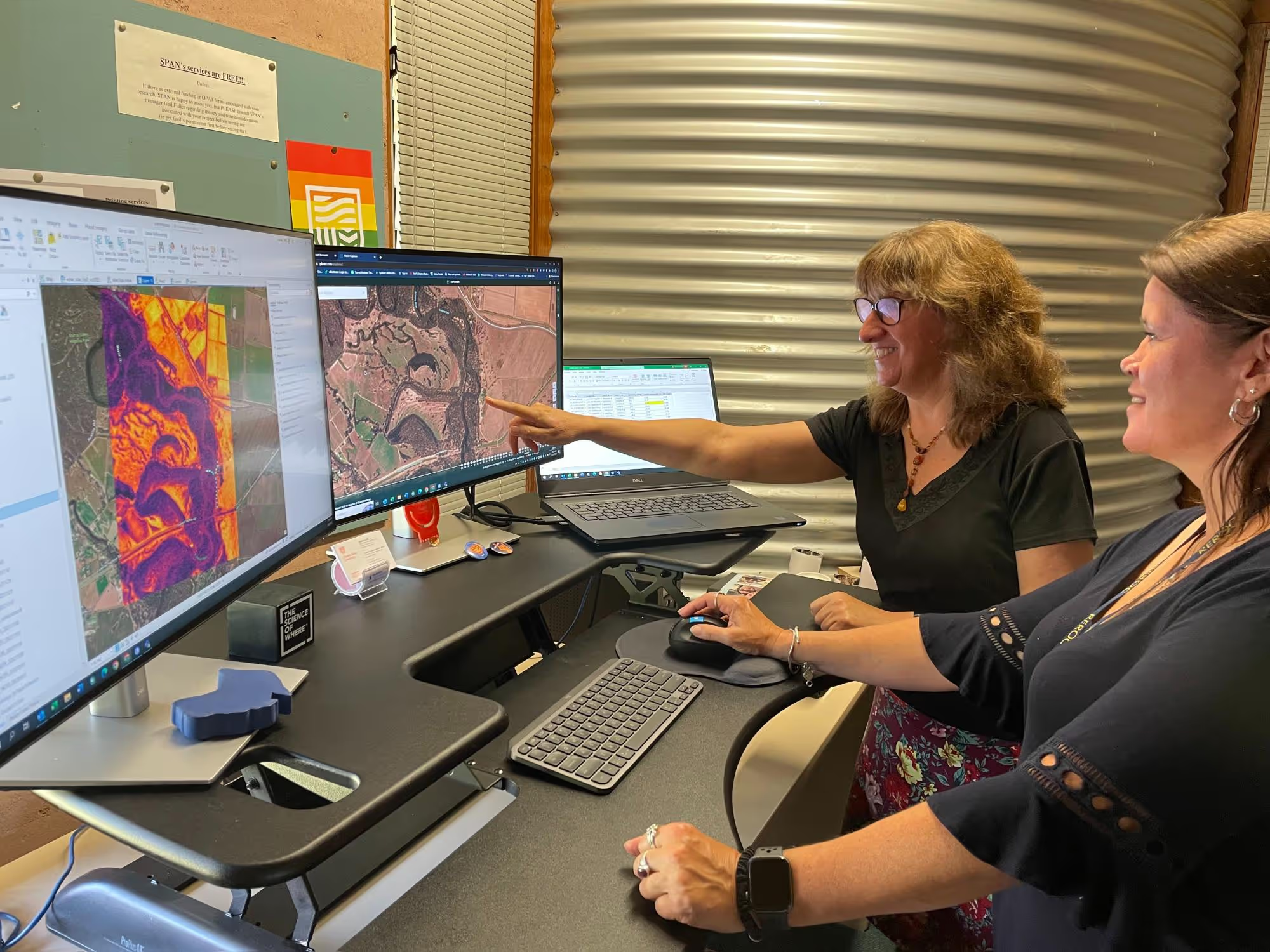
Themes
River Flows and Connectivity
Regulation of the Basin’s rivers has changed how water flows and how rivers connect. Commonwealth environmental water aims to bring back more natural patterns of flow and connectivity. This Theme evaluates how well Commonwealth environmental water achieves that aim.
Native Vegetation
Native plants in the Basin depend on water to stay healthy and strong. Commonwealth environmental water aims to support native plants on the floodplain. This Theme evaluates outcomes for native plants from Commonwealth environmental water.
Waterbirds
Waterbirds use the rivers, lakes and wetlands of the Basin for breeding, habitat and food. They need river flows and flooding at every stage of their lives. Commonwealth environmental water aims to support habitats these birds use. It also aims to support waterbird populations. This Theme evaluates outcomes for waterbirds from Commonwealth environmental water.
Cultural Outcomes (TBC)
Cultural outcomes help people meet their cultural obligations to care for Country. Cultural outcomes can be living things, special places or important activities. This Theme evaluates how Commonwealth environmental water supports cultural outcomes so people can keep Country healthy.
Native Fish
Native fish rely on water as their habitat and can tell us how healthy an ecosystem is. Their different life stages depend on river flows. Commonwealth environmental water aims to support the health, movement and populations of native fish. This Theme evaluates outcomes for native fish from Commonwealth environmental water.
Cross-cutting and foundational activities
There are 4 activities in the Basin-scale project that support and connect all parts of the program.
Foundation analysis and reporting
We compile, analyse and share Basin-scale data. We use these foundation analyses for Basin-scale evaluation, monitoring and reporting.
First Nations people’s monitoring, evaluation and research
First Nations people are integral to Flow-MER. We include and protect First Nations knowledge and science in the Program and ensure that First Nations people have leadership and decision-making roles in the Basin-scale project.
Data management
We manage all the Flow-MER monitoring and research data. This makes sure the data is accurate, high-quality and timely. The data is available for anyone to use.
Knowledge exchange
We share our knowledge of the whole Basin and we're open about what we do. We also work with others in Flow-MER to share and improve knowledge.
Research
Our research has 2 main goals:
- to deepen our understanding of the relationships between water and the ecosystems and wildlife that depend on it.
- to recommend how to evaluate and manage Commonwealth environmental water to support natural processes and have positive outcomes across the Basin.
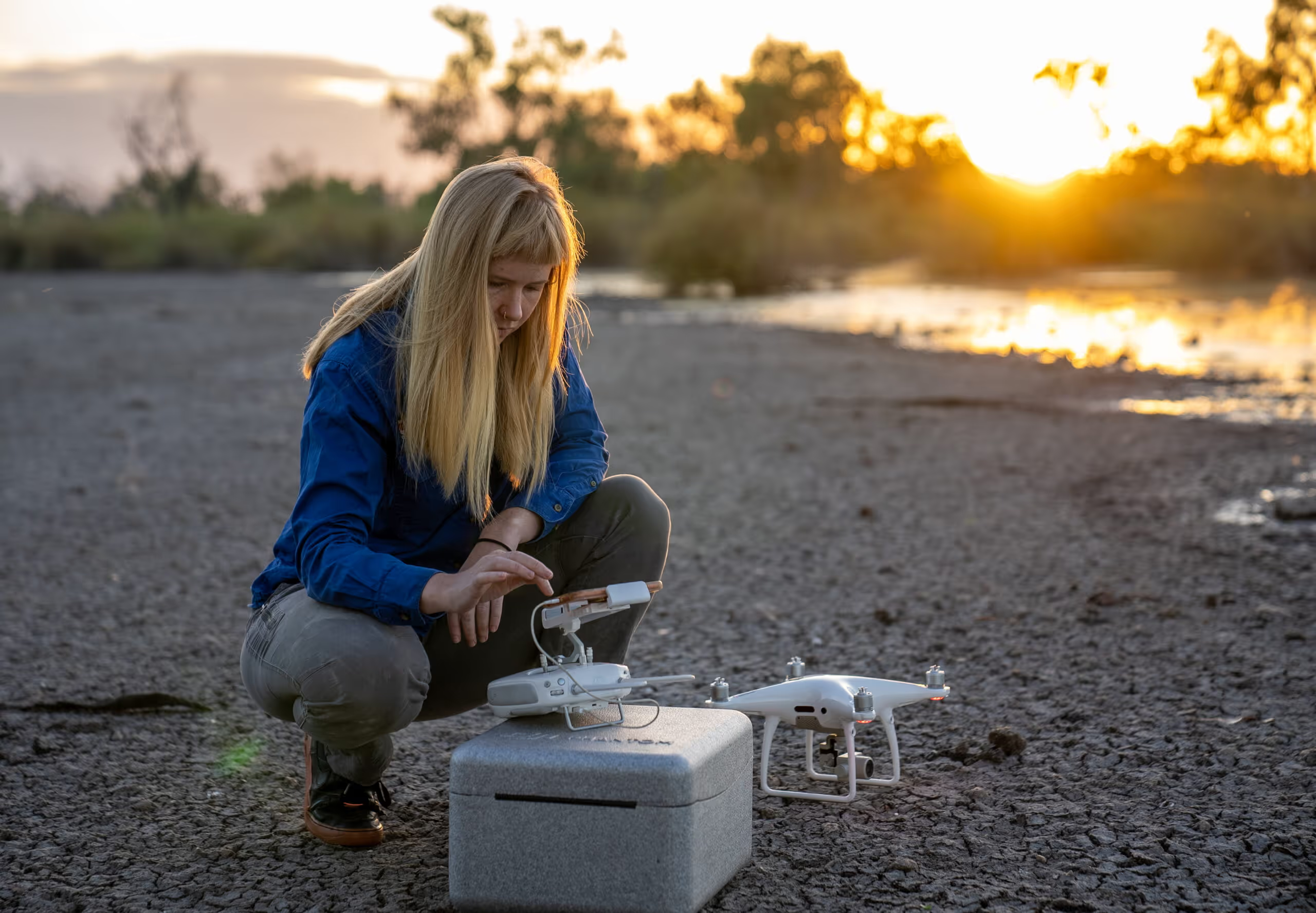
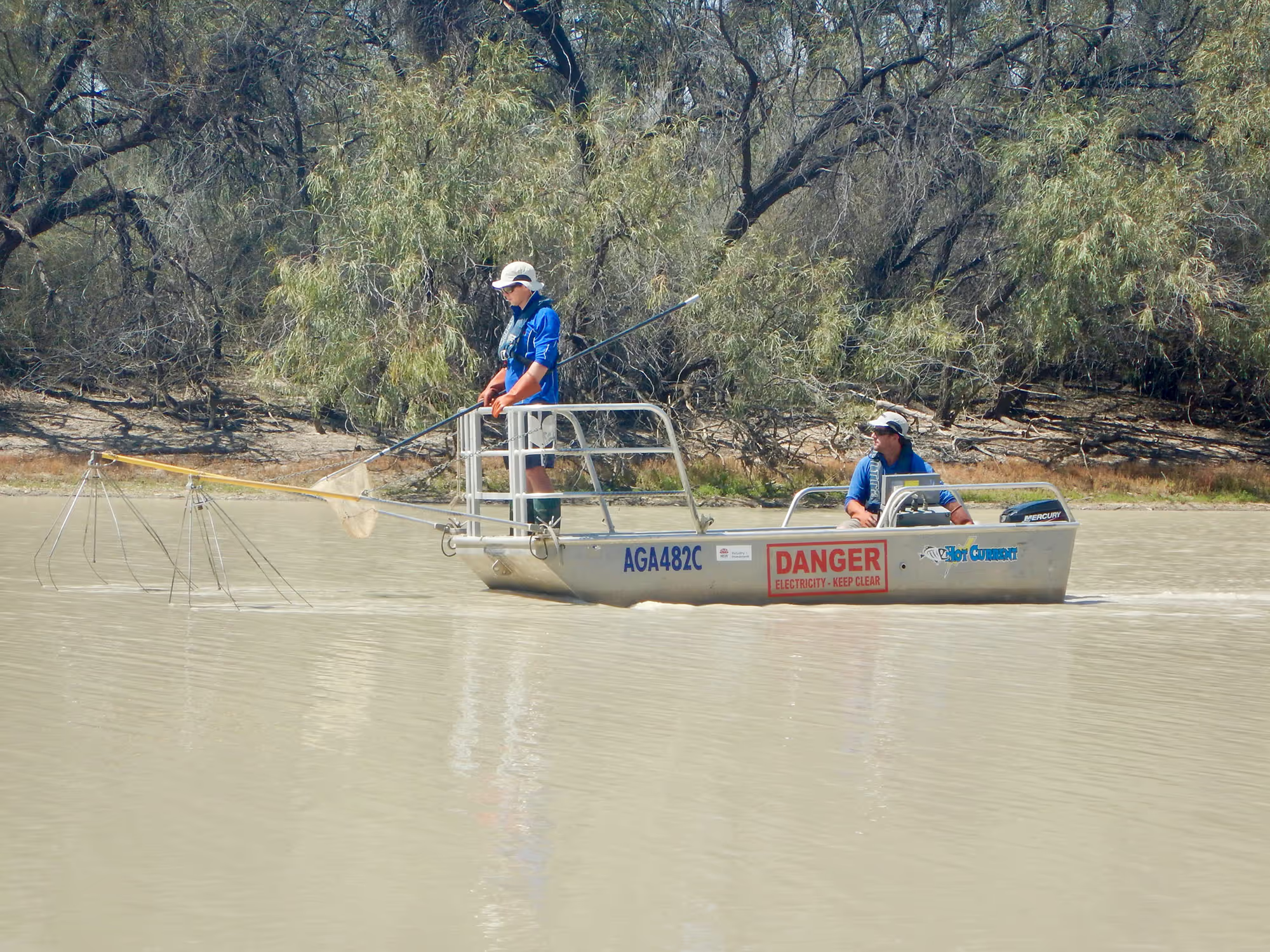
Outcomes and Implications for Water Managers
Commonwealth environmental water supports the Basin’s:
- biodiversity
- ecosystem functions
- water quality
We’ve been doing our evaluations since 2014. Our most recent evaluation was for the 2022–23 water year (the water year runs from July to June). It was a wet year, so there were big natural flows in the Basin.
Read more in our 2022–23 Basin-scale evaluation synthesis report (PDF 29.2 MB).
Biodiversity
In 2022–23, Commonwealth environmental water supported:
- 22,205 kilometres of rivers
- 202,071 hectares of lakes and wetlands
- 71,837 hectares of floodplains
- 23,768 hectares of estuary
Commonwealth environmental water can support up to 64 different aquatic ecosystems in the Basin. In 2022–23, 53 of these ecosystems received water.
In 2022–23, Commonwealth environmental water supported:
- 291 plant species that depend on water
- 43 groundcover plants known to be used by Aboriginal people
- 13 native fish species, including golden perch and Murray cod
- 84 waterbird species, including aggregate-nesting species
- 11 frog species, including the threatened southern bell frog
Some vegetation communities, like those in floodplains and wetlands, prefer wetter conditions. Commonwealth environmental water has stopped these communities from shrinking or disappearing.
Ramsar wetlands are internationally important wetlands. The Basin has 11 Ramsar wetlands that can be supported by Commonwealth environmental water. In 2022–23, 8 of those wetlands received water.
Native fish need flows to breed, move and grow. Commonwealth environmental water has supported native fish throughout their lives and across the Basin. This is mostly because there were fewer days when water flows are low.
Read more on the Waterbirds page and Species Diversity page.
Ecosystem functions
Commonwealth environmental water helps restore natural flows to the Basin. This includes:
- how big flows are
- how long flows last
- what times of year flows happen
- connections between the rivers, floodplain wetlands and downstream areas
2022–23 was a wet year. Commonwealth environmental water boosted these natural flows. The southern Basin was drier in the summer, and water helped maintain flows there.
Ecosystem ‘metabolism’ is the flow of energy (carbon) through the system’s food webs. Commonwealth environmental water helped to protect and restore ecosystem metabolism across the Basin in 2022–23. This reduced the risk of low-oxygen events and algal blooms.
Read more on the Ecosystem Diversity page.
Water quality
Higher flows, helped by Commonwealth environmental water, means that the water in rivers is better mixed and less salty. Water that’s well mixed has lots of oxygen so that fish and other animals can breathe. Water that’s too salty can harm the delicate ecosystems in the Lower Lakes and Coorong. Commonwealth environmental water has helped oxygenate water throughout the Basin and flush salt out of the lower river.
Read more on the Food Webs and Water Quality page.
Our Basin-scale research investigates:
- how environmental water affects the plants, animals and ecosystems in the Basin
- how to improve approaches and methods for monitoring and evaluation
- how to communicate results for best uptake
This knowledge helps the Australian Government to manage and deliver Commonwealth environmental water so it has the most benefits.
Outcomes from 13 research projects are improving our evaluation and understanding of the outcomes of Commonwealth environmental water.
Read more in our Basin-scale research: summary 2024 (PDF 9.5 MB).
Biodiversity
Four research projects looked at:
- waterbird movement
- protection of refugia
- condition assessment
- scaling
We satellite-tracked waterbirds from 2016 to 2024. We now know much more about how, when and where waterbirds use water to breed, feed and rest.
Wetlands and lakes are refuges for plants and animals during droughts and other hard times. We mapped where the most important refuges are in the Basin so they can be prioritised for watering.
How healthy an ecosystem is will affect how it responds to environmental water. We identified attributes of ecosystem health to help explain watering outcomes in different ecosystems.
Outcomes from watering can range from benefiting individual wetlands to the whole Basin. We developed tools to evaluate ecosystem diversity at these different spatial scales.
Read more on the Waterbirds page and Species Diversity page.
Vegetation
Two research projects improved our knowledge of how woody (trees) and non-woody (groundcover) vegetation respond to Commonwealth environmental water.
River red gum and black box are 2 iconic riverine trees in the Basin. We developed a way to use satellite imagery to see how individual river red gum and black box trees across the Basin use water.
Non-woody vegetation, such as groundcover, is a key part of Basin river–floodplain ecosystems. To evaluate how healthy it is, we first need to know what’s ‘good’. We developed a framework to see how healthy non-woody vegetation is.
Read more on the Vegetation page.
Fish
Two research projects looked at how flows affect the breeding, growth and survival of native fish in the Basin.
We developed population models for golden perch, Murray cod and bony herring. The models can test how flows affect the life histories of these iconic species.
We analysed fish movement over time and matched it up with flows in areas where the fish were moving. Murray cod and golden perch moved more and farther with higher flows.
Read more on the Fish page.
Food Webs and Water Quality
One research project looked at how Commonwealth environmental water influences food webs. Commonwealth environmental water led to bigger and healthier food webs across the Basin.
Read more on the Food Webs and Water Quality page.
Modelling and visualisation
Three research projects developed methods and tools to evaluate the benefits of environmental water.
We created a model that identifies which types of flows affect which plant communities in different ways. We also developed a framework that can look at the impacts of watering across space and time. And we investigated the best ways to display data so that it’s easy to understand.
Communication and engagement
One research project looked at Indigenous engagement and inclusion in decision-making in the Basin. We co-developed a case study with Traditional Owners on Country.
Reports
The Basin-scale team produces the following reports to help us understand how water for the environment is helping to maintain, protect and restore rivers, wetlands, plants and animals in the Basin:
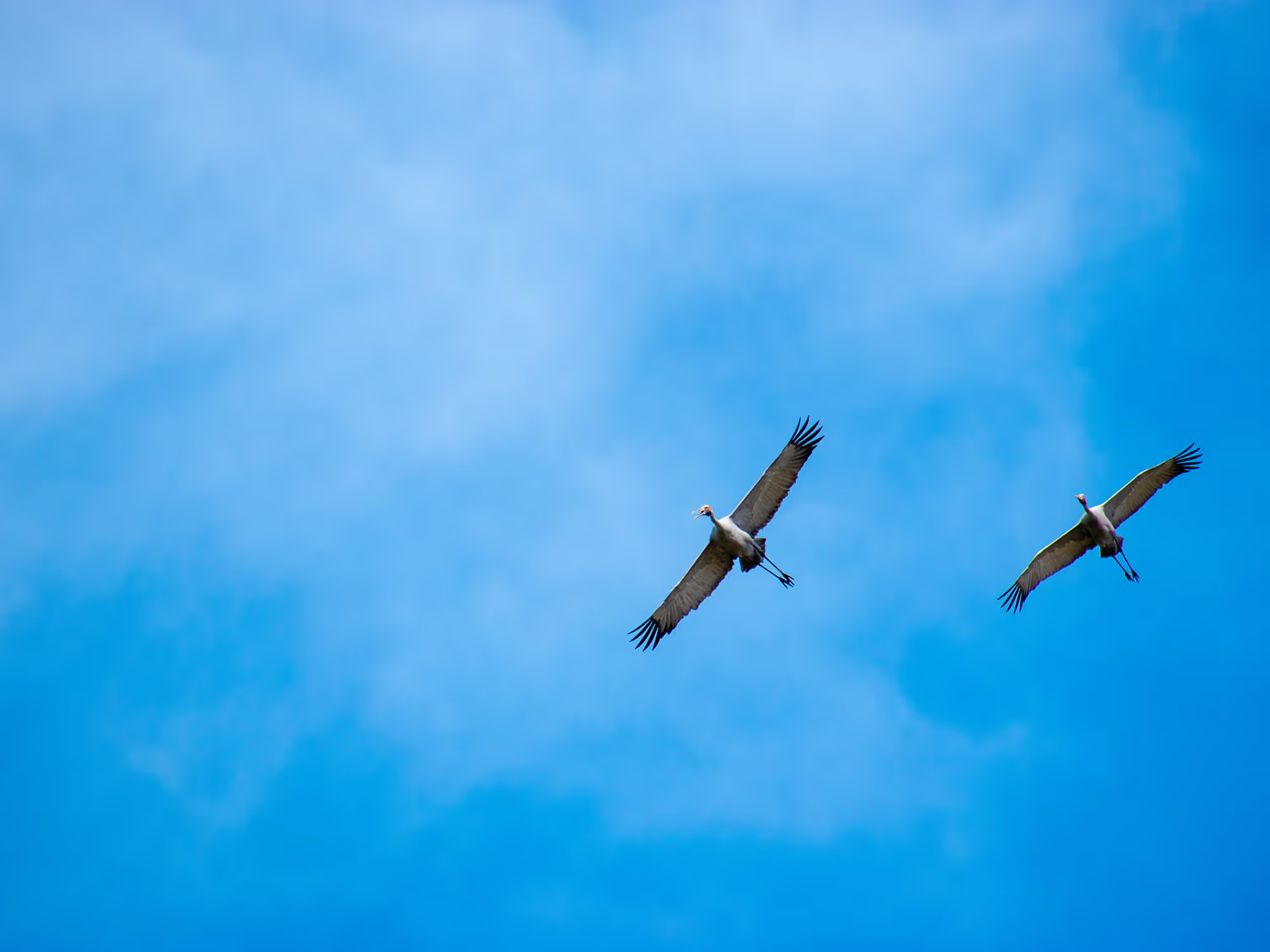
Our Team
CSIRO has been engaged by the CEWH to conduct the Basin Scale Project of the Flow-MER Program from July 2024 to June 2029.

Partners

University of Canberra

One Basin Cooperative Research Centre

Brooks Ecology and Technology

Alluvium Consulting

University of Melbourne

University of New South Wales

Environmental Systems Solutions

Arthur Rylah Institute for Environmental Research

NSW Department of Primary Industries and Regional Development

NSW Department of Climate Change, Energy, the Environment and Water

South Australian Research and Development Institute
